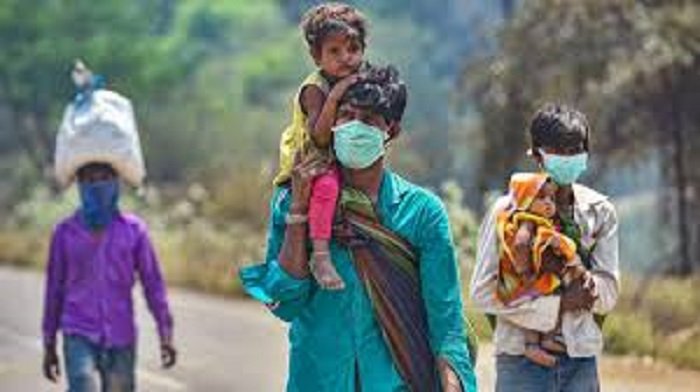The novel coronavirus, which first emerged in Wuhan, China, left havoc in its wake as it swept across the world in 2020 and the lockdown measures in India has revealed the – sufferings and struggle of the migrant workers. The migrant workers across the nation, in a desperate bid to return home, embarked on long and perilous journeys on foot.
The crisis of hunger among migrant workers is only likely to grow steeper with 50 percent of workers interviewed having rations left for less than a day, according to a study. The ‘21 Days and Counting: COVID-19 Lockdown, Migrant Workers, and the Inadequacy of Welfare Measures in India’ report pointed out 72 per cent of the workers said that their ration would finish in two days.
In Maharashtra, 71 per cent told the Stranded Workers Action Network (SWAN) that they had rations only for a day while 89 per cent had stocks for two days.
However, these are temporary measures that are not sustainable for a period as long as 21 days (and now longer). Even the central government’s announcement of aid to construction workers from the cess collected by labour welfare boards means nothing to the many stranded migrants who aren’t registered.
Only some state governments have recognised the acute distress of those migrants and have started extending relief measures (beyond shelters) for migrants like the supply of free rations to non-ration-card holders (Delhi) and Rs 1000 cash transfers to stranded migrants (Bihar).
Despite some meaningful state orders, the workers’ testimonies at the time they reached out to SWAN volunteers present a sombre picture. Among the states we have received most requests from, the administrative response has so far been most prompt in Karnataka and has been the most patchy in Maharashtra.
- 50% of workers had rations left for less than 1 day
- 96% had not received rations from the government and 70% had not received any cooked food
This is the worst in Uttar Pradesh where none of the workers had received any rations from the govt (out of 1611 who were asked this). On access to cooked food, there’s considerable state-level variation. While in Karnataka 80 percent haven’t been ready to access cooked food, in Punjab only 32 percent didn’t have access to cooked food. The figures from Delhi and Haryana, states which provided the foremost number of cooked meals within the country, also are encouraging. Close to 60 percent of the workers we’ve received calls from said that that they had been ready to access cooked meals.







